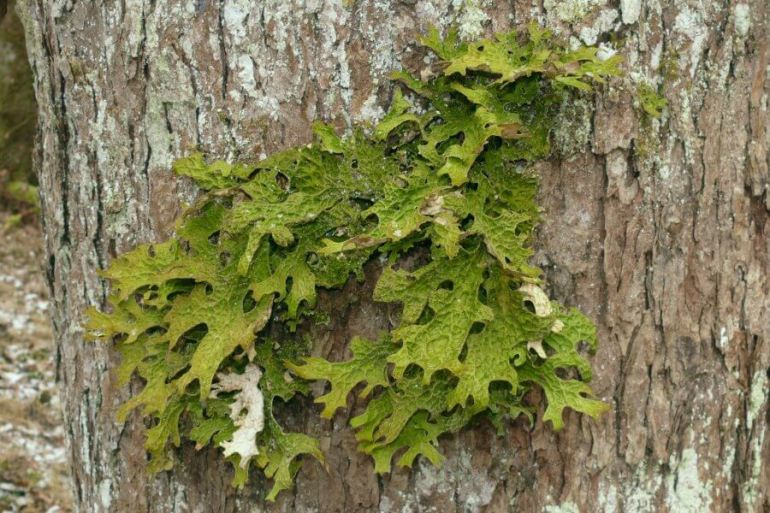A lichen is sometimes portrayed as a small package of harmonious living. A fungus sets up home and invites an alga or cyanobacteria in to photosynthesise and provide the food. In return it offers protection, water and maybe nutrients. This isn’t quite accurate. The fungi get more from the partnership than the algae. I like the line from Trevor Goward: “Lichens are fungi that have discovered agriculture“.
Given there’s quite an asset in the sugars a lichen has, it’s not surprising that they’re targets for other microbes looking for a free lunch.

A new paper in New Phytologist by Asplund et al. examines what happens when Plectocarpon lichenum attacks lichen. They look at Lobaria pulmonaria as the host lichen. L. pulmonaria produces carbon-based secondary compounds (CBSCs). This are complex carbon molecules that the lichen uses against stress and attack. What Asplund and colleagues have found is that P. lichenum attacks the lichens with the lowest concentrations of CBSCs. So what is going on? CSBCs vary in a population of lichens anyway, so is P. lichenum attacking the weakest lichens, or is it reducing defenses when it attacks?
To test what was happening Asplund and colleagues compared infected thalli (effectively lichen stems) with uninfected thalli. They ran the experiment twice. For one set of lichens they just transplanted the infected and uninfected lichens and saw what happened to growth and CBSC concentration. For the other experiment, they washed the lichens in acetone. This reduced the concentration of CBSCs in the healthy lichens.
What they found was that in both cases the uninfected lichens grew more than the infected lichens, showing that earlier lab-based work correlates with lichen in the wild. They also found that the healthy washed lichen replaced their CBSCs. The washed infected lichen did not.
It’s tempting to leap to the conclusion that P. lichenum is actively suppressing CBSC production, in order to parasitise the lichen better, but the authors point out that it’s not certain. What P. lichenum is doing is grabbing free food. By doing that, it could be having a side effect that it’s reducing the lichen’s ability to make CBSCs.
An example of this kind of interaction having further consequences is in an earlier Asplund et al paper. Asplund and colleagues found that P. lichenum could, in some situations, make a lichen tastier for grazing snails. It shows that there’s plenty of research to be done, not just on how parasites attack lichen, but on how parasites trigger complex changes in the food web, when they attack.






[…] also: Plectocarpon lichenum: the parasite that makes itself comfortable when it moves into a lichen The lichen that changes its reproductive strategy according to the […]